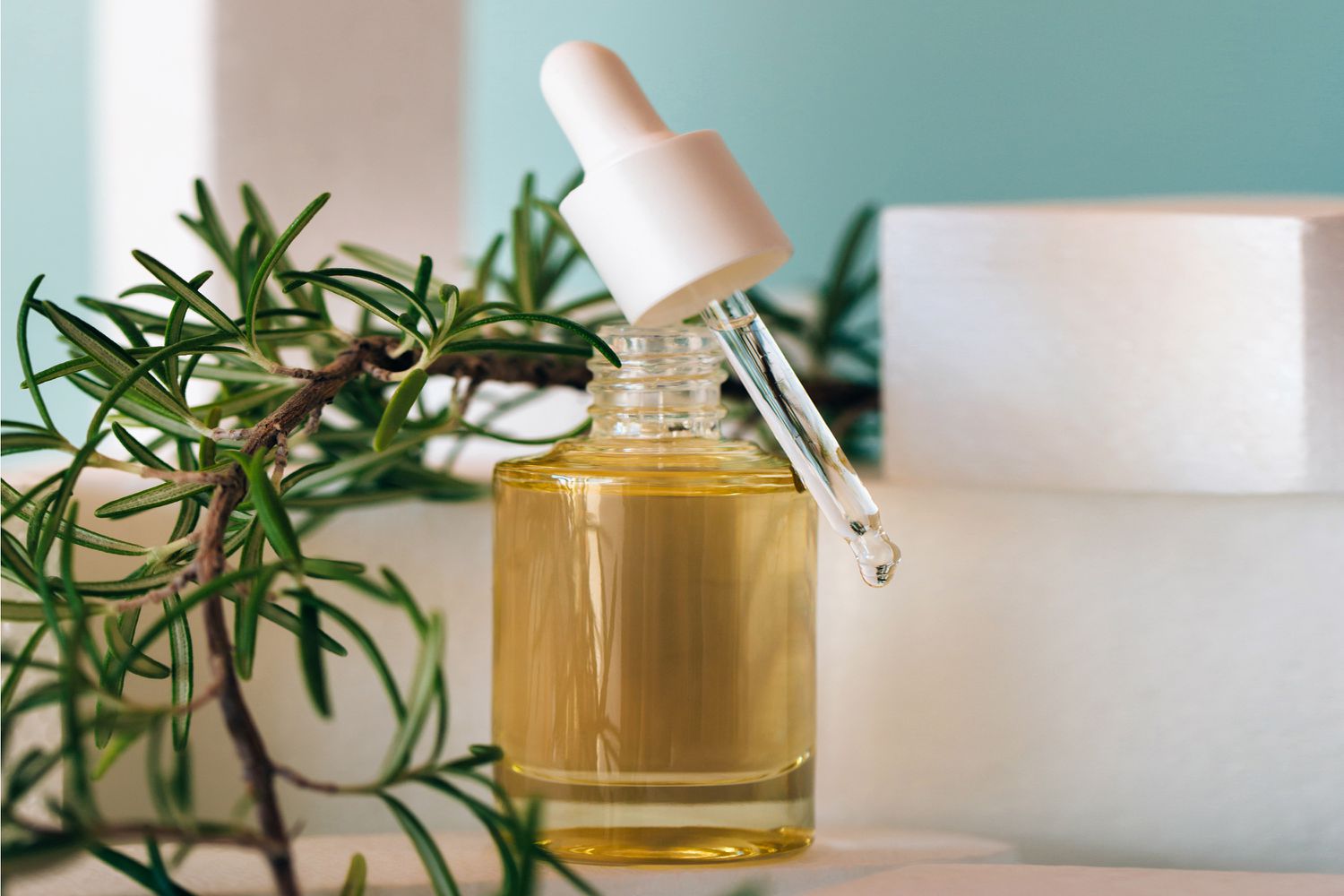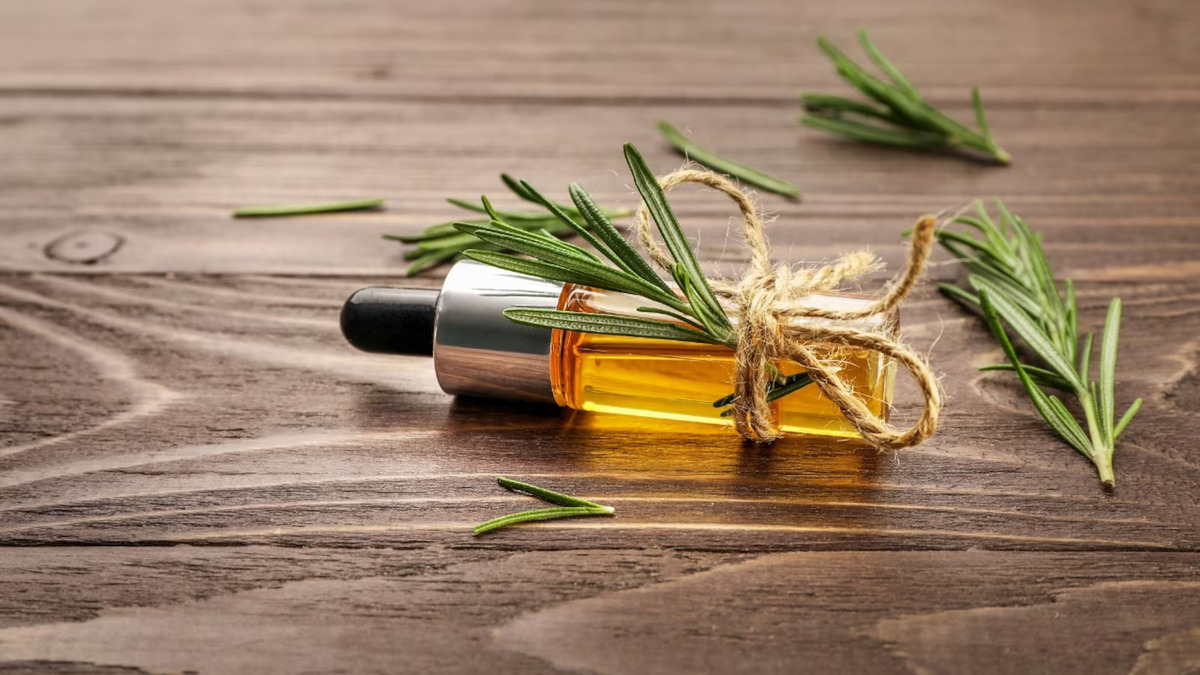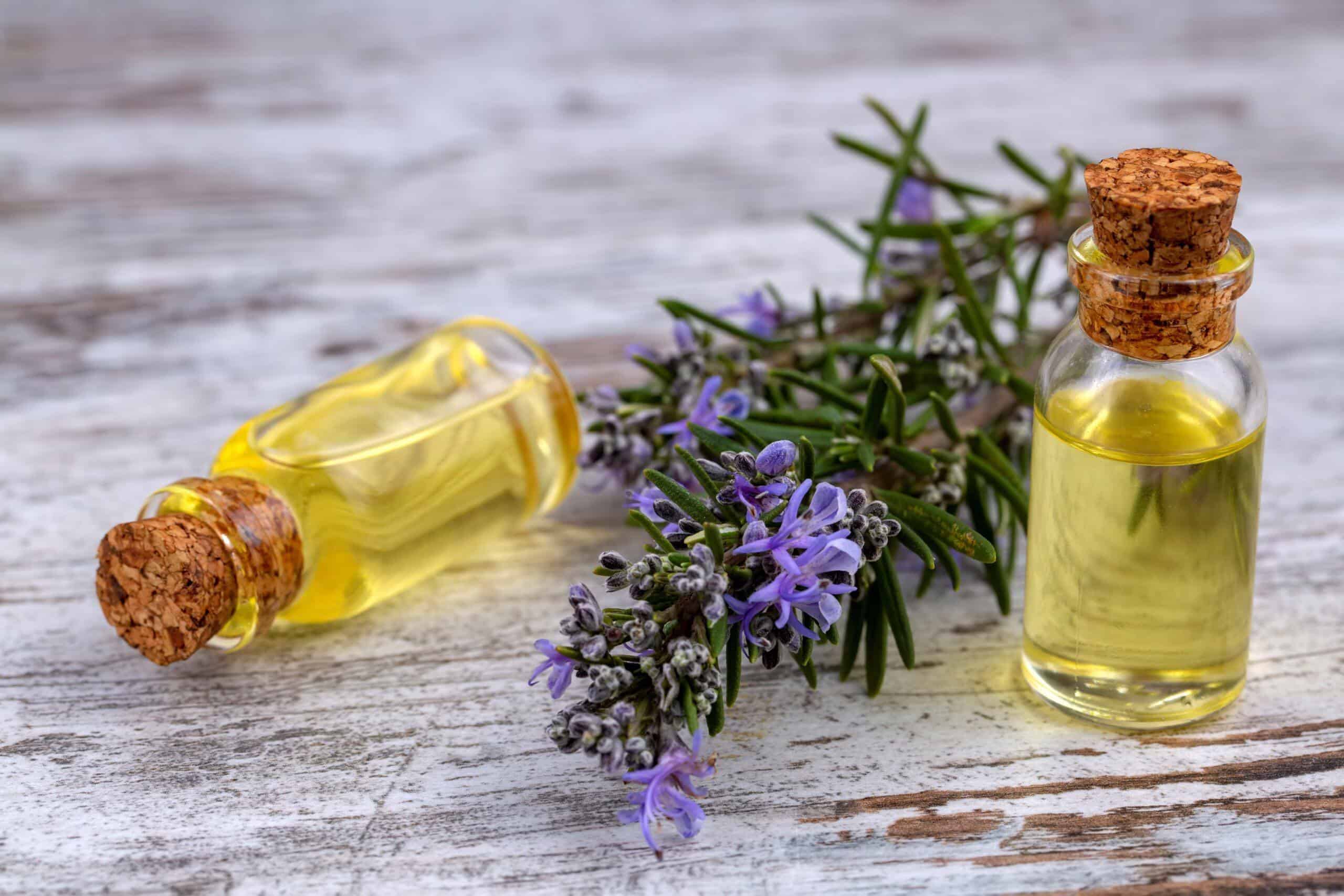Home>Gardening Techniques>DIY Projects>How To Make Rosemary Essential Oil


DIY Projects
How To Make Rosemary Essential Oil
Modified: January 27, 2024
Learn how to make rosemary essential oil at home with this easy DIY project. Create your own natural essential oil for various uses.
(Many of the links in this article redirect to a specific reviewed product. Your purchase of these products through affiliate links helps to generate commission for Chicagolandgardening.com, at no extra cost. Learn more)
Table of Contents
Introduction
Welcome to the world of DIY essential oils! If you're a fan of natural remedies and aromatherapy, then you're in for a treat. In this comprehensive guide, we'll delve into the fascinating process of making rosemary essential oil right in the comfort of your own home. Not only will you learn how to extract this aromatic elixir, but you'll also discover the various ways to use it for its numerous health and wellness benefits.
Rosemary essential oil is cherished for its invigorating scent and a myriad of therapeutic properties. From promoting mental clarity and concentration to soothing muscle aches and pains, this versatile oil has been a staple in traditional medicine for centuries. By creating your own batch of rosemary essential oil, you can harness its natural goodness and customize it to your preferences.
Throughout this guide, we'll explore the step-by-step process of selecting the right rosemary, harvesting and preparing the herb, extracting the essential oil using different methods, and finally, storing and using the finished product. Whether you're a seasoned essential oil enthusiast or a curious beginner, this journey into the world of rosemary essential oil is sure to inspire and empower you to embrace the art of natural wellness.
So, roll up your sleeves and get ready to embark on a fragrant and rewarding adventure as we uncover the secrets of making your very own rosemary essential oil. Let's dive in and unlock the aromatic wonders of this beloved herb!
Choosing the Right Rosemary
When it comes to crafting high-quality rosemary essential oil, the first crucial step is selecting the right type of rosemary. With a variety of species and cultivars available, each boasting its own unique aroma and chemical composition, it’s essential to choose the most suitable one for your desired oil.
One of the most popular choices for extracting essential oil is Rosmarinus officinalis, commonly known as common or garden rosemary. This aromatic herb features needle-like leaves and carries a distinct, herbaceous fragrance. Alternatively, Rosmarinus officinalis ct. verbenone is favored for its higher verbenone content, making it prized for skincare and hair care formulations.
When selecting rosemary for oil extraction, consider the following factors:
- Variety: Choose a rosemary variety that aligns with your intended use of the essential oil. Whether it’s for aromatherapy, skincare, or culinary purposes, different rosemary cultivars offer varying aromatic profiles and therapeutic benefits.
- Freshness: Opt for fresh rosemary sprigs that are vibrant green in color and free from wilting or yellowing. The fresher the rosemary, the more potent and aromatic the resulting essential oil will be.
- Aroma: Take the time to inhale the fragrance of the rosemary. Look for a robust, herbaceous scent with hints of camphor and earthiness, as these are indicative of high-quality essential oil potential.
- Growth Conditions: If possible, source rosemary that has been grown organically or without the use of synthetic pesticides or herbicides. Organic cultivation ensures a purer and more natural chemical composition in the essential oil.
By carefully considering these factors, you can set the stage for a successful and aromatic journey into making rosemary essential oil. The right choice of rosemary will lay the foundation for a high-quality and effective essential oil that you’ll be proud to incorporate into your wellness and self-care routines.
Harvesting and Preparing Rosemary
Once you’ve selected the perfect rosemary for your essential oil project, the next step is to harvest and prepare the herb for the extraction process. Proper harvesting and preparation are vital in preserving the integrity and potency of the essential oil. Let’s explore the essential steps to ensure the best possible outcome:
Timing: Harvest your rosemary in the morning, ideally after the dew has dried but before the sun is at its peak. This timing helps ensure that the plant’s essential oils are at their most concentrated state, maximizing the aromatic and therapeutic qualities of the oil.
Pruning: Using clean, sharp scissors or pruning shears, carefully prune the rosemary plant, focusing on the top growth and avoiding any woody stems. Regular pruning not only encourages new growth but also helps maintain the plant’s overall health and vigor.
Preparation: Once harvested, gently rinse the rosemary sprigs under cool running water to remove any dirt or debris. Pat the sprigs dry with a clean cloth or paper towel, ensuring that they are free from excess moisture before proceeding to the next step.
Dehydration: To prepare the rosemary for the extraction process, it’s essential to dry the herb thoroughly. Lay the sprigs in a single layer on a clean, dry towel or a wire rack, ensuring good air circulation. Place the rosemary in a warm, well-ventilated area away from direct sunlight, and allow it to air dry for approximately 1 to 2 weeks, or until the leaves are crisp and brittle to the touch.
Storage: Once the rosemary is completely dry, store it in an airtight container away from light and moisture. Properly dried and stored rosemary will retain its aromatic potency and be ready for the essential oil extraction process.
By meticulously following these steps, you’ll prepare your rosemary for the essential oil extraction process, ensuring that the resulting oil captures the true essence and therapeutic benefits of this beloved herb. With the rosemary harvested and primed for the next phase, you’re one step closer to creating your very own fragrant and potent rosemary essential oil.
Methods of Extracting Rosemary Essential Oil
Extracting rosemary essential oil is a captivating process that offers various methods for capturing the herb’s aromatic and therapeutic essence. From steam distillation to maceration, each technique presents unique advantages and yields a distinct profile of the resulting oil. Let’s explore some popular methods of extracting rosemary essential oil:
Steam Distillation: This traditional and widely used method involves passing steam through the rosemary plant material, causing the essential oils to be released from the plant’s glands. The steam, now carrying the essential oil molecules, is then cooled and condensed, separating the oil from the water. The resulting oil is highly concentrated and retains the characteristic aroma and therapeutic properties of the rosemary plant.
Hydrodistillation: Similar to steam distillation, hydrodistillation utilizes water as the extracting medium instead of steam. This method is particularly suitable for delicate plant materials and can be a gentle way to extract the essential oil while preserving its integrity.
Expression or Cold-Pressing: This method is commonly used for extracting essential oils from citrus peels, but it can also be applied to certain aromatic herbs like rosemary. The process involves mechanically pressing the plant material to release the essential oil. While not as commonly used for rosemary as for citrus fruits, cold-pressing can yield a unique oil with its own distinct qualities.
Macération: In this method, the rosemary plant material is soaked in a carrier oil, such as olive or jojoba oil, allowing the essential oil to naturally infuse into the carrier over time. This gentle process is suitable for home-based extraction and results in an infused oil that captures the herb’s aroma and beneficial properties.
Each extraction method offers a different approach to capturing the essence of rosemary, resulting in oils with distinct aromatic profiles and therapeutic benefits. Whether you’re drawn to the traditional art of steam distillation or prefer the simplicity of maceration, exploring these methods allows you to tailor the extraction process to your preferences and create a rosemary essential oil that resonates with your unique wellness needs.
Storing and Using Rosemary Essential Oil
Once you’ve successfully extracted your rosemary essential oil, proper storage and thoughtful utilization are essential to maintain its potency and maximize its benefits. Here’s how to store and incorporate this aromatic elixir into your daily wellness routine:
Storage: To preserve the quality of your rosemary essential oil, store it in dark glass bottles, such as amber or cobalt blue, to protect it from light exposure. Ensure that the bottles are tightly sealed to prevent oxidation and evaporation of the oil’s volatile compounds. Store the bottles in a cool, dark place, away from direct sunlight and heat, to maintain the oil’s stability and longevity.
Labeling: Properly label your essential oil bottles with the date of extraction and the type of carrier oil used, if applicable. Clear labeling helps you keep track of the oil’s freshness and ensures that you can easily identify and reach for the oil when needed.
Usage: Rosemary essential oil offers a myriad of applications for health, beauty, and home care. Here are some popular ways to incorporate it into your daily routine:
- Aromatherapy: Diffuse rosemary essential oil in a well-ventilated space to promote mental clarity, focus, and a refreshing ambiance. Its invigorating aroma can help uplift the mood and enhance cognitive function.
- Massage and Topical Application: Dilute rosemary essential oil in a carrier oil, such as sweet almond or coconut oil, and use it for a stimulating massage or to soothe tired muscles and joints. Its analgesic properties make it a valuable addition to massage blends.
- Hair and Scalp Care: Add a few drops of rosemary essential oil to your shampoo or conditioner to promote healthy hair growth and scalp wellness. Its stimulating properties can help revitalize the scalp and support overall hair health.
- DIY Cleaning Products: Harness the natural antibacterial and antifungal properties of rosemary essential oil by adding it to homemade cleaning solutions for a fragrant and effective way to freshen and sanitize your living spaces.
By integrating rosemary essential oil into your self-care and home routines, you can experience its versatile and uplifting benefits while embracing the art of natural wellness. With proper storage and mindful usage, your homemade rosemary essential oil can become a cherished ally in your journey toward holistic well-being.
Conclusion
Congratulations on embarking on the enriching journey of creating your own rosemary essential oil! Throughout this guide, we’ve explored the intricate yet rewarding process of selecting the right rosemary, harvesting and preparing the herb, and extracting the precious essential oil through various methods. As you’ve discovered, the art of making rosemary essential oil is a delightful fusion of nature’s gifts, creativity, and holistic wellness.
By carefully choosing the finest rosemary, you’ve laid the foundation for an oil that embodies the herb’s aromatic splendor and therapeutic virtues. The meticulous process of harvesting and preparing the rosemary has ensured that the resulting essential oil captures the true essence of this beloved herb, offering a potent and fragrant elixir that reflects your dedication to quality and natural wellness.
Exploring the diverse methods of extracting rosemary essential oil has allowed you to tailor the process to your preferences, resulting in an oil that resonates with your unique wellness needs. Whether you’ve opted for the traditional art of steam distillation, the gentle approach of maceration, or another method, your homemade rosemary essential oil is a reflection of your creativity and personal connection to nature’s bounty.
As you embark on the journey of storing and using your homemade rosemary essential oil, you’re poised to experience its versatile benefits in aromatherapy, massage, hair care, and home cleaning. By incorporating this aromatic elixir into your daily rituals, you’ll infuse your life with the invigorating essence of rosemary, enhancing your well-being in body, mind, and spirit.
With proper storage, mindful usage, and a heart open to the wonders of natural wellness, your homemade rosemary essential oil is poised to become a cherished companion in your holistic self-care journey. Embrace the art of natural wellness, and let the aromatic wonders of rosemary enrich your life in countless ways.
May your aromatic adventures continue to inspire and uplift you, and may the essence of rosemary accompany you on your path to holistic well-being. Here’s to the art of creating and savoring the gifts of nature, one fragrant drop at a time.






